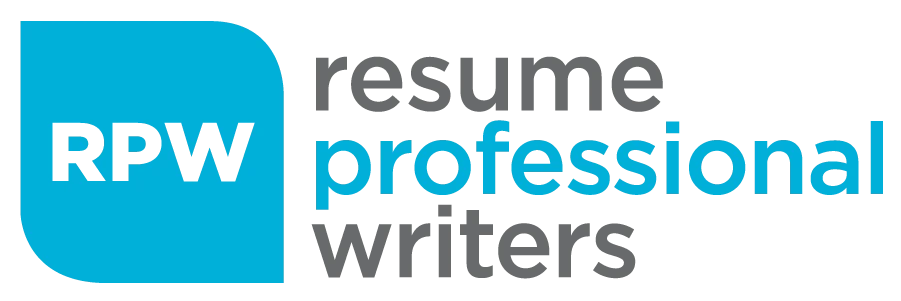Are you a student wondering how to create an impressive career portfolio? This article will show you practical examples of career portfolios for students, offering you clear ideas and guidance on what to include and how to present your skills and achievements effectively, reflecting your ability to impress potential employers or clients. A strong portfolio can help candidates gain a competitive edge in the job market, making it an essential tool for career success.
A student career portfolio should encompass essential elements like writing samples, projects, a mission statement, and professional references to effectively showcase skills and experiences. By examining real-life examples from students like Emily Rodriguez, Michael Chen, and Priya Patel, you can gain inspiration for how to present your unique talents and career aspirations.
Regularly updating your portfolio and avoiding common mistakes, such as including too much content or overlooking details, is key to maintaining a strong and professional presentation.

Introduction to Career Development
Creating a professional portfolio is an essential step in career development, as it allows individuals to showcase their skills, experience, and accomplishments to prospective employers. A career portfolio is a collection of documents and artifacts that demonstrate a person’s educational background, communication skills, and work experience. It can include writing samples, project reports, and other examples of a person’s best work. By creating a strong career portfolio, individuals can enhance their job search and increase their chances of achieving their career goals. A well-crafted portfolio not only highlights your achievements but also tells a compelling story about your professional journey, making you a standout candidate in the eyes of employers.
Benefits of a Student Portfolio
A student portfolio is a valuable tool for students to showcase their skills, interests, and accomplishments to potential employers and colleges. It can include examples of writing, art, and other projects that demonstrate a student’s capabilities and personality. By creating a student portfolio, students can develop a strong online presence and increase their visibility in their industry. A portfolio can also help students to stand out from other candidates and demonstrate their potential to employers. Additionally, a student portfolio can be used to showcase a student’s personal brand and career goals, making it an essential tool for career development. By thoughtfully curating and presenting their work, students can effectively communicate their unique strengths and aspirations.
Essential Elements of a Student Career Portfolio
A student career portfolio is more than just a collection of documents; it’s a carefully curated showcase of your background, skills, and aspirations. Creating and organizing your own portfolio is crucial to reflect your unique skills and experiences. At its core, a student portfolio provides a comprehensive view of your career history, experience, and ambitions.
Essential components include writing samples, class papers, projects, awards, transcripts, certifications, and educational background. These elements collectively demonstrate your academic achievements and practical experience. Every student portfolio needs to include case studies that showcase the learning process, providing deeper insights into your development and problem-solving abilities. Marketable skills should be clearly listed to highlight relevant abilities, while work samples emphasize your accomplishments and diverse skill set in the course of your career.
Incorporating a mission statement can clarify your professional beliefs and aspirations, and professional references provide validation of your skills and work ethic. A clear career summary succinctly outlines your relevant work experience and skills, capturing employer interest and helping to position you effectively. Organize your portfolio using headings, tables of contents, or tabs to enhance readability and understanding. A well-crafted resume can further support your application, telling your story.

Inspiring Examples of Career Portfolios for Students
Seeing how others have successfully crafted their portfolios can provide valuable inspiration and insights for creating your own. Portfolios can be particularly effective for students in creative fields like advertising and digital marketing. Diverse portfolio examples showcase various ways students can present their skills and experiences, providing a wealth of ideas for your career portfolio.
This guide explores three standout professional portfolio examples from college students who have effectively used their portfolios to highlight their unique talents and career aspirations in the arts: Emily Rodriguez, Michael Chen, and Priya Patel.
Example 1: Emily Rodriguez
Emily Rodriguez’s portfolio is a testament to the power of reflection and detailed presentation. Her ‘About Me’ section offers insight into her personal and academic journey, setting the tone for the rest of her portfolio. The ‘Artifacts’ section showcases representative items of her academic achievements, each paired with a reflective annotation that adds depth and context to her artwork.
The ‘Career’ section highlights Emily’s evolving skills and experiences, clearly showing her growth throughout her career. Her ‘G.O.A.L.S.’ section discusses her engagement with global awareness and leadership development, while the ‘Year in Review’ portion allows her to reflect on her growth and experiences over the past year.
Example 2: Michael Chen
Michael Chen’s portfolio is a showcase of his engineering prowess and creativity. His projects cover a variety of engineering fields, demonstrating his versatility and technical skills. Detailed technical documentation presents project goals, methodologies, and outcomes, offering a comprehensive view of the problem-solving processes.
Michael’s portfolio also includes several prototypes that illustrate his innovative approaches to engineering challenges, providing tangible evidence of his capabilities and creativity in the world of engineering.
Example 3: Priya Patel
Priya Patel’s portfolio focuses on her communications and public relations projects, highlighting her creative and strategic thinking. Her portfolio features a variety of writing samples that reflect her skills and creativity, allowing her to write effectively.
Detailed strategies from her campaigns showcase her critical thinking and planning abilities, while her team management client feedback emphasizes the impact and effectiveness of her work.

Building a Portfolio as a High School Student
Building a portfolio as a high school student can seem daunting, but it can be a great way to get a head start on college and career applications. Students can start by collecting examples of their best work, such as writing samples, art projects, and volunteer work. They can also include any relevant coursework, internships, or extracurricular activities that demonstrate their skills and interests. By creating a portfolio, high school students can develop a strong foundation for their future career and educational pursuits. It’s also essential to seek guidance from a career counselor or teacher to ensure that the portfolio is well-organized and effectively showcases the student’s abilities. This early start can provide a significant advantage in the competitive world of college admissions and job markets.
Digital Platforms for Hosting Student Portfolios
In today’s digital age, electronic portfolios have become popular due to their convenience for viewing and sharing. E-portfolios are now a staple for working professionals, offering a modern and accessible way to showcase skills and achievements.
Recommended platforms include Webflow, Squarespace, and LinkedIn. These platforms provide various features tailored to creating stunning and professional online portfolios. Digital portfolio builders like Webflow and Squarespace offer templates for creating online portfolios easily, simplifying the process for students and professionals alike.
Webflow
Webflow is a powerful web design tool that allows students to create visually stunning portfolios that stand out on a website. With features like responsive design, animations, and interactive elements, Webflow enables users to enhance their portfolio presentations.
The platform’s drag-and-drop interface makes it easy for students to build and update their portfolios without needing extensive coding knowledge. Webflow also includes templates that simplify the portfolio creation process, allowing for quick setups.
Squarespace
Squarespace is highlighted for its intuitive design, making it easier for students to create and manage their portfolios. The platform offers a range of customizable templates designed specifically for portfolio presentation, ensuring that students can showcase their work in a professional and aesthetically pleasing manner.
LinkedIn is an effective tool for networking and enhancing visibility in job sectors. Students can leverage LinkedIn to connect with industry professionals and discover job search opportunities tailored to their career interests.
Creating a LinkedIn profile that aligns with career goals can significantly boost a school student’s chances of being noticed by potential employers. By sharing projects, work samples, and accomplishments on LinkedIn, students can create an online portfolio that reflects their skills and experiences, including internships. A career counselor can also provide valuable guidance in this process.

Tips for Creating an Impactful Student Career Portfolio
Creating an impactful career portfolio involves more than just compiling your work; it’s about presenting it in a way that resonates with potential employers. Innovative thinking and idea-generation are crucial in creating a standout portfolio. Quality submissions are preferred over quantity, so focus on showcasing fewer but more impactful projects. Curate your projects to align with the job you’re pursuing, rather than listing everything you’ve done.
Incorporate self-reflection in your projects to demonstrate critical thinking and problem-solving skills. Attention to detail is crucial, as errors in grammar or formatting can undermine the professionalism of your portfolio. Linking to professional websites can provide additional insights into your communication skills and experience, and having printed copies during interviews can facilitate discussions about your work. Tell the story behind your work to give insights into your thought process, helping potential employers understand your approach and creativity.
Personal Branding
Personal touches in portfolios significantly impact how potential employers perceive candidates. Personalizing your portfolio to reflect your individual personality can help your portfolio stand out in a professional setting. For non-traditional careers, developing a personal brand through a career portfolio is crucial. Choose colors and fonts that reflect your personality while maintaining consistency throughout the portfolio. Injecting your personality into your portfolio is the best way to make it stand out from the crowd. Good student portfolios utilize design principles like white space and color to enhance visibility, ensuring that your work is both professional and visually appealing.
The design should align with your personal brand and overall career goals. Showcasing skills such as social media marketing, communication, leadership, and aesthetic sensitivity can enhance your portfolio’s appeal to employers as a graphic designer. Your portfolio should reflect your personal brand, story, and personality, making it a unique representation of who you are as a professional.
Highlighting Skills and Accomplishments
Include both technical and soft skills in your portfolio, describing the specific work settings where these skills were applied to provide context and relevance. Tailor portfolio items to align with job requirements to increase your chances of making an impression.
Filter out unnecessary items to ensure that only the most relevant experiences and accomplishments are presented. Separate skills and accomplishments in your portfolio to achieve each component’s standout and capture evaluators’ attention.
Including Relevant Work Samples
Work samples are essential for showcasing your capabilities and experiences effectively to prospective employers. Provide context for each work sample to explain its related relevance to the potential job, demonstrating your skills and practical experiences while presenting your best work.
Including detailed technical documentation and project prototypes demonstrates your abilities to develop completed projects and expand your portfolio.

Creating a Strong Job Search Strategy
A strong job search strategy involves more than just applying to job openings; it requires a comprehensive approach that includes networking, building a professional online presence, and creating a strong portfolio. By having a professional portfolio, job seekers can demonstrate their skills and experience to potential employers and stand out from other candidates. A portfolio can include a variety of documents and artifacts, such as a resume, cover letter, and writing samples. It can also include examples of projects and accomplishments that demonstrate a person’s capabilities and achievements. By creating a strong portfolio and job search strategy, individuals can increase their chances of achieving their career goals and landing their dream job. This holistic approach ensures that you are well-prepared and positioned to seize opportunities as they arise.
Common Mistakes to Avoid in Career Portfolios
Avoid common mistakes that can undermine your portfolio’s effectiveness. Including too much content can overwhelm potential employers and dilute the impact of your key achievements. Overwhelming design choices can distract from your work, and broken links can reflect poorly on your professionalism.
Check for typos and grammatical errors, and ensure that social media feeds linked in your portfolio are curated and professional. Don’t procrastinate on minor details like personal logos, as they can detract attention from more critical components of your portfolio.
These mistakes can lead to lost opportunities and misrepresentation of your seeking skills in the future.
Maintaining and Updating Your Career Portfolio
Regularly updating your career portfolio reflects new experiences and skills, removes outdated items, and monitors your progress. Maintaining a portfolio is important in various fields, including psychology, where professional associations and dedicated websites can help showcase portfolios to prospective employers. Keeping your work samples relevant and showcasing recent contributions helps maintain a current and impressive portfolio.
Ensure your portfolio meets the technical standards of the platform you choose, making it accessible and well-organized. Digital portfolios offer the convenience of being accessible to employers anytime, making updates easier and more efficient. Incorporate user-friendly design to maintain reader interest and clear communication, ensuring that your portfolio is both engaging and easy to navigate.
Using a Portfolio to Achieve Career Goals
A portfolio is a powerful tool that can help individuals achieve their career goals by showcasing their skills, experience, and accomplishments to potential employers. By creating a strong portfolio, individuals can demonstrate their capabilities and potential, and increase their chances of landing a job or advancing in their career. A portfolio can be used in a variety of ways, such as to apply for jobs, seek career advancement, or pursue further education. It can also be used to showcase a person’s personal brand and career goals, making it an essential tool for career development. By regularly updating and expanding their portfolio, individuals can continue to demonstrate their growth and capabilities, and achieve their long-term career goals. This ongoing process of refinement and enhancement ensures that your portfolio remains a dynamic and accurate reflection of your professional journey.

Elevate Your Career Portfolio: Crafting a Compelling Student Showcase
Creating a standout student career portfolio requires understanding the essential elements that make it effective. By drawing inspiration from successful examples and choosing the right digital platform, you can apply practical tips for a professional presentation. Avoiding common mistakes and keeping your portfolio updated ensures it reflects your growth and achievements accurately. Your portfolio will evolve as you evolve; it needs to be a constant work in progress, adapting to showcase your latest skills and experiences.
For personalized assistance in crafting your resume, consider exploring resume writing services that can enhance your professional presentation. Additionally, delve into annotated portfolio writing to add depth and context to your work samples, making your portfolio a true reflection of your personal brand and career aspirations.








